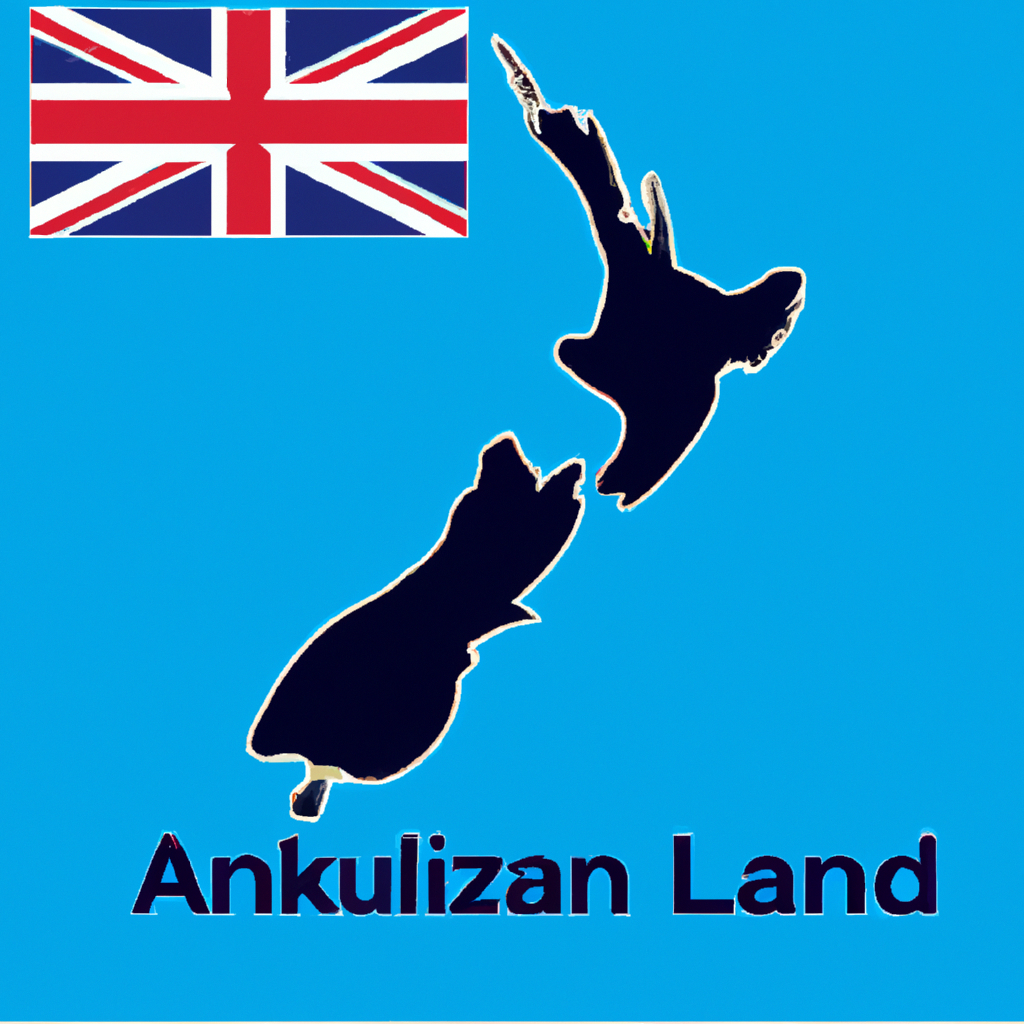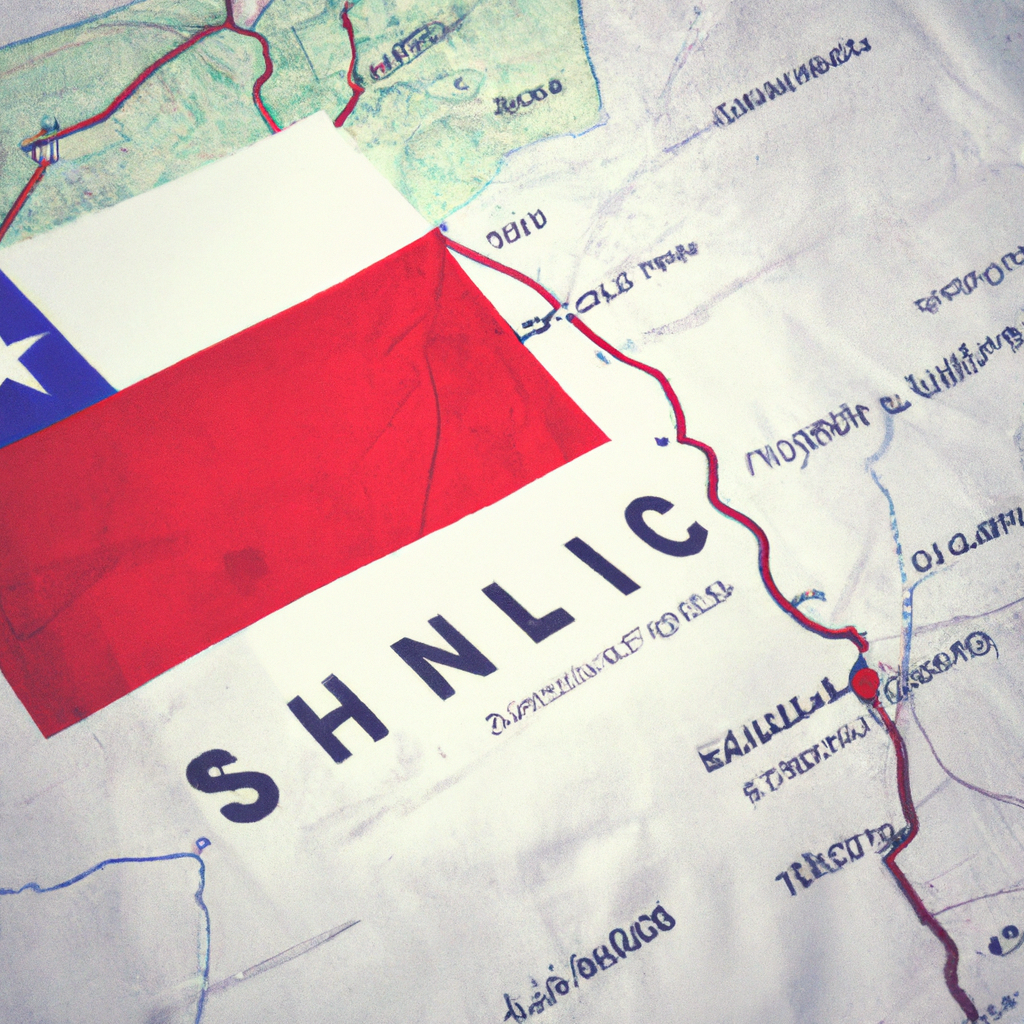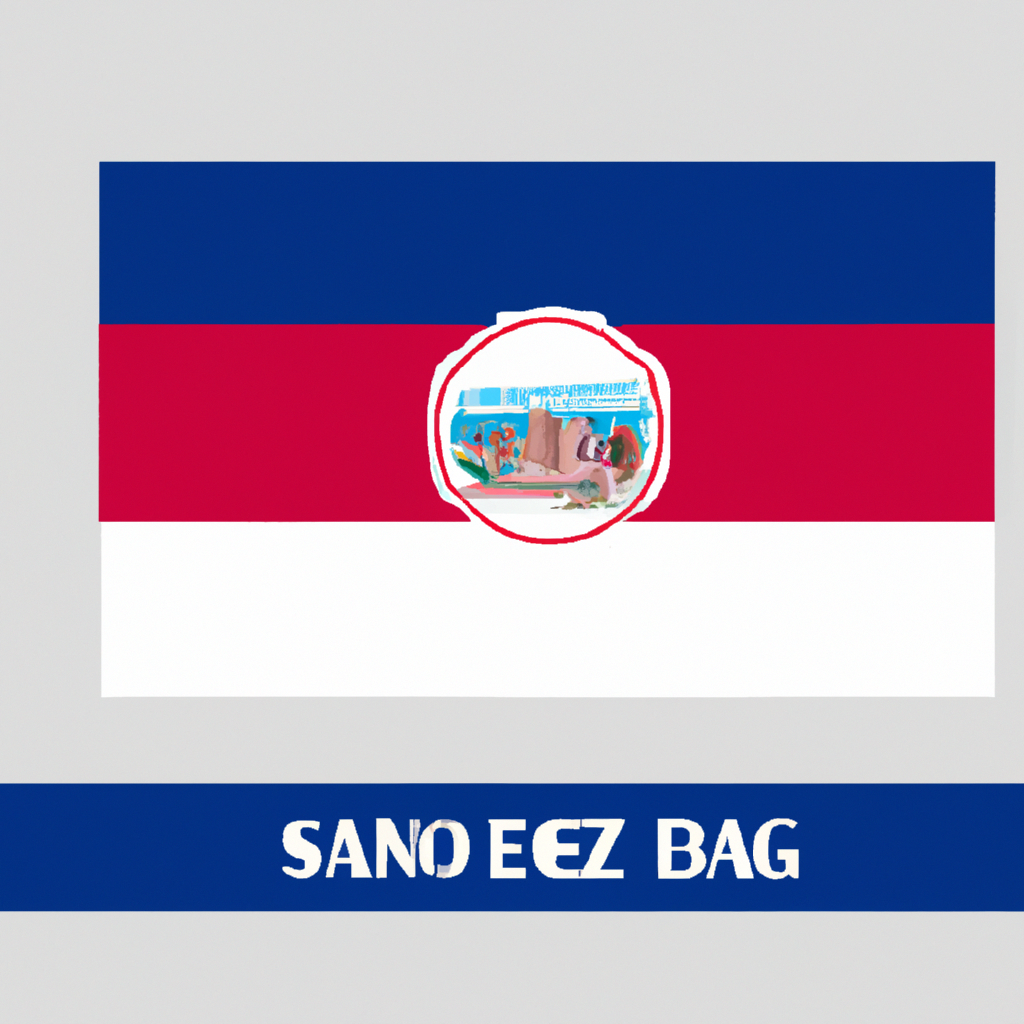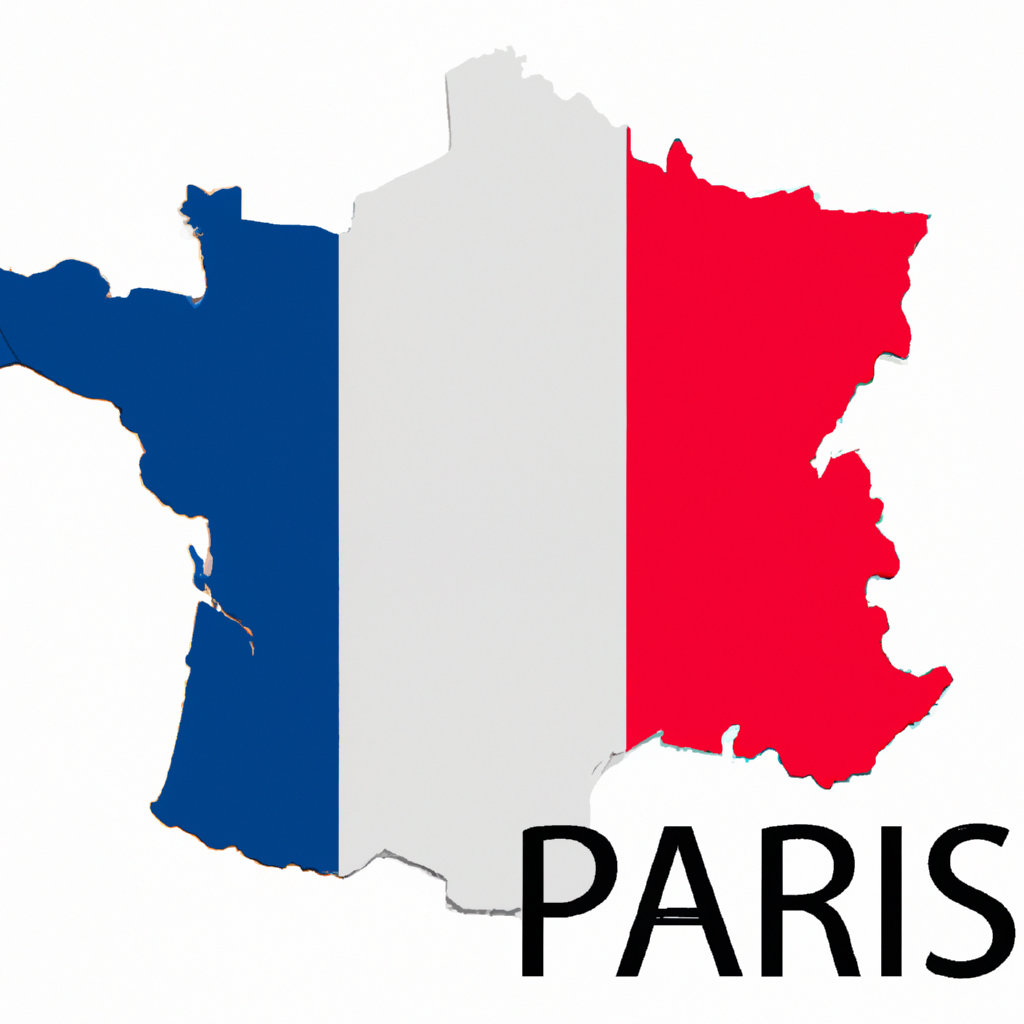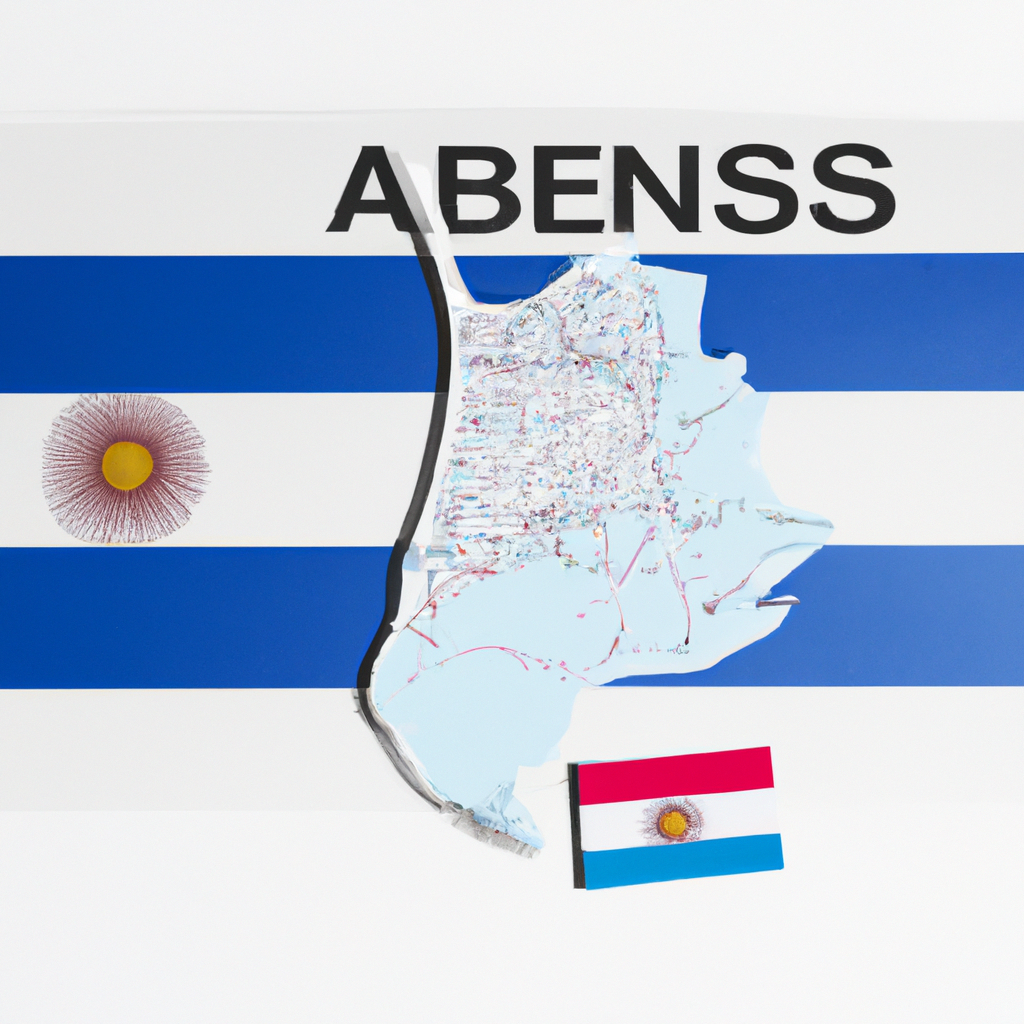Auckland, New Zealand: Interesting Facts,History, Things to do,Why to Visit
Post ByAdequate Travel
Auckland, New Zealand is a beautiful place to visit and explore. No matter what you're interested in, you're sure to find something enjoyable to do. Auckland offers breathtaking scenery, fascinating history, and exciting activities to explore. From hiking to sailing, there's something for everyone to enjoy. And when you need a break, the city has plenty of cafes and restaurants for you to visit. With so much to see and do, Auckland is sure to keep you busy during your stay. So, what are you waiting for? Come explore the wonderful city of Auckland and discover why it's the perfect place for a relaxing holiday!
New Zealand is a country located in the southwestern Pacific Ocean, comprising two main islands, North Island and South Island, as well as numerous smaller islands. It has a population of approximately 5 million people and is known for its stunning landscapes, diverse wildlife, and vibrant indigenous Maori culture.The country has a mixed economy with agriculture, tourism, and manufacturing as its major industries. New Zealand is known for its agricultural exports, particularly dairy products, meat, and wool. In recent years, it has also seen growth in the technology and film industries.New Zealand is renowned for its outdoor activities and adventure tourism, offering opportunities for hiking, skiing, bungee jumping, and water sports. The country's diverse natural heritage includes national parks, fjords, geothermal areas, and beautiful beaches.The Maori culture is an integral part of New Zealand's identity, and the country has made efforts to preserve and promote its traditions. Maori language, customs, and arts are celebrated, and visitors can experience cultural performances, visit Maori villages, and learn about the rich history and mythology.Politically, New Zealand is a parliamentary democracy with a constitutional monarchy, recognizing Queen Elizabeth II as the head of state. The country has a strong welfare and healthcare system, as well as a reputation for being environmentally conscious.New Zealand has gained international recognition for its handling of the COVID-19 pandemic, implementing strict border controls and effective contact tracing measures. As a result, the country has been able to maintain low case numbers and resume domestic activities relatively quickly.In summary, New Zealand is a picturesque country known for its natural beauty, adventure tourism, rich Maori culture, and successful management of the COVID-19 pandemic.new-zealand tourist attractions offer a diverse range of experiences for every traveler.
Interesting facts
Geography
New Zealand is a beautiful island country located in the southwestern Pacific Ocean. It consists of two main islands, the North Island and the South Island, as well as numerous smaller islands. The country is known for its stunning natural landscapes, including mountains, fjords, beaches, and geothermal areas.
- The North Island is home to the country's largest city, Auckland, and is known for its geothermal activity. It has several active volcanoes, including Mount Ruapehu and White Island. The region also features geothermal areas with hot springs, geysers, and mud pools, such as in Rotorua.
- The South Island is famous for its majestic mountains, including the Southern Alps, which run through the island. The highest peak in New Zealand, Mount Cook, is located in this region. The South Island also has stunning fjords, such as Milford Sound and Doubtful Sound.
Unique Wildlife
New Zealand is known for its unique and diverse wildlife, with many species found nowhere else in the world. Due to its isolation, the country developed a special ecosystem with distinctive plants and animals.
- The kiwi bird is one of New Zealand's most iconic animals. It is flightless, nocturnal, and known for its long beak. There are several species of kiwis, including the North Island brown kiwi, the Great Spotted kiwi, and the Little Spotted kiwi.
- The New Zealand fur seal is another species native to the country. They can be found along the coastline, particularly in areas like the Kaikoura Peninsula.
Cultural Heritage
New Zealand has a rich cultural heritage, primarily influenced by its indigenous population, the Māori people. Māori traditions, language, and customs are an integral part of the country's identity.
- The Māori language, known as Te Reo Māori, is an official language in New Zealand. It is taught in schools and widely spoken by the Māori community.
- Māori art and carving are highly regarded. Traditional carvings can be seen in many cultural landmarks, including marae (meeting grounds) and museums.
Adventure Sports
New Zealand is often referred to as the adventure capital of the world, offering a wide range of adrenaline-pumping activities.
- Bungee jumping originated in New Zealand, with the famous Kawarau Bridge Bungy near Queenstown being the world's first commercial bungee site.
- The country is also renowned for its hiking trails, such as the famous Milford Track and the Tongariro Alpine Crossing.
Overall, New Zealand offers a unique combination of breathtaking landscapes, diverse wildlife, rich cultural heritage, and thrilling adventure sports. It is a country that truly has something for everyone to enjoy.From museums to parks,new-zealand tourist attractions offer something for everyone, making it a versatile destination for all type of tourists.History of New Zealand
In this section, we will discuss the history of New Zealand, focusing on key events and milestones in chronological order.
1. Early Settlement and Polynesian Origins
Before the arrival of European settlers, New Zealand was inhabited by the indigenous Māori people. The ancestors of the Māori arrived in New Zealand around 1,000 years ago from Polynesia, establishing a rich culture and society.
Example: The Māori people developed a unique language, customs, and artistic traditions, creating elaborate carvings, tattoos (known as moko), and performing arts such as the haka.
2. European Exploration and Colonization
The first European to sight New Zealand was Dutch explorer Abel Tasman in 1642, but it wasn't until Captain James Cook's voyages in the late 18th century that Europeans began to visit and explore the islands.
Example: Captain Cook's exploration of New Zealand led to increased interest from European nations, eventually resulting in the signing of the Treaty of Waitangi in 1840 between the British Crown and Māori chiefs, establishing New Zealand as a British colony.
3. New Zealand Wars
The mid-19th century saw a series of conflicts known as the New Zealand Wars or Land Wars. These were primarily conflicts between the British Crown and Māori tribes over land and sovereignty.
Example: The most significant conflict was the Taranaki War (1860-1861), which involved significant land confiscations and displacement of Māori communities. It had lasting impacts on Māori culture and land ownership.
4. Transformation into a Dominion and World Wars
New Zealand became a self-governing colony in 1852 and then a dominion within the British Empire in 1907. The country actively supported the British Empire during both World War I and World War II.
Example: New Zealand's involvement in World War I included the significant contribution of soldiers in several major battles such as Gallipoli in 1915. The sacrifices made during these wars helped shape New Zealand's national identity.
5. Progress toward Independence and Modernization
In the post-war era, New Zealand gradually moved toward greater independence from Britain and strengthened its ties with other countries in the Pacific region. The country embarked on a period of modernization and social reforms.
Example: Notable reforms included the establishment of the welfare state (including free healthcare and education), nuclear-free policy, and recognition of Treaty of Waitangi rights for Māori.
6. Recent Developments
New Zealand continues to evolve as a diverse and multicultural society. In recent years, there has been a growing focus on addressing historical injustices and promoting Māori cultural revival, including the revitalization of the Māori language.
Example: The development of the Waitangi Tribunal, established in 1975, has played a crucial role in resolving Māori land grievances and treaty settlements.
In conclusion, the history of New Zealand includes the early settlement of the Māori people, European exploration and colonization, conflicts over land and sovereignty, involvement in two world wars, progress toward independence and modernization, and recent developments focused on indigenous rights and cultural revival.
Exploring the rich heritage of historical sites in new-zealand is a journey through time and culture.Famous Things of New Zealand
1. Queenstown
Queenstown is a popular tourist destination known for its stunning landscapes and adventure activities. It is often referred to as the "Adventure Capital of the World" and offers activities such as bungee jumping, skydiving, jet boating, and hiking. The town is situated on the shores of Lake Wakatipu and surrounded by majestic mountains.
2. The Milford Sound
The Milford Sound is a breathtaking fjord located in Fiordland National Park. It is known for its dramatic landscapes, towering waterfalls, and abundant wildlife. Visitors can take a scenic boat cruise to explore the stunning beauty of the Milford Sound, including landmarks like Mitre Peak and Stirling Falls.
3. Maori Culture
The indigenous Maori culture plays a significant role in New Zealand's identity. Visitors have the opportunity to learn about Maori traditions, art, and history through various cultural experiences, including traditional performances (haka), visits to Maori villages (marae), and exploring historic sites such as the Waitangi Treaty Grounds in Northland.
4. The All Blacks
The All Blacks is New Zealand's national rugby team and is widely regarded as one of the most successful and dominant teams in rugby history. Rugby holds immense importance in New Zealand, and the All Blacks have a strong following. Witnessing a rugby match with the All Blacks playing is a memorable experience for sports enthusiasts.
5. The Lord of the Rings Filming Locations
New Zealand's stunning landscapes served as the backdrop for the iconic Lord of the Rings film trilogy. Many fans of the franchise visit various filming locations scattered across the country, such as Matamata (Hobbiton), Tongariro National Park (Mordor), and Nelson (Pelennor Fields), to experience the fantasy world of Middle-earth in real life.
6. Kiwi Birds
The kiwi bird is a unique and iconic symbol of New Zealand. These flightless birds are native to the country and are known for their distinctive appearance and behavior. Several conservation efforts are in place to protect the endangered kiwi population, and visitors can spot them in wildlife sanctuaries or dedicated kiwi houses.
7. Wai-O-Tapu Thermal Wonderland
Located in the Taupo volcanic zone, the Wai-O-Tapu Thermal Wonderland is a geothermal wonderland featuring colorful hot springs, geysers, and bubbling mud pools. Visitors can witness the surreal beauty of the thermal landscape and observe natural phenomena like the famous Champagne Pool and Lady Knox Geyser.
Discover some unique facts about new-zealand that will leave you amaze and intrigue.Culture of New Zealand
New Zealand has a unique and diverse culture that has been shaped by its indigenous Maori heritage, European settlement, and the influences of Pacific and Asian communities. The country prides itself on being multicultural and strongly values tolerance, equality, and diversity.
1. Maori Culture
The Maori people, who are the indigenous population of New Zealand, play a significant role in the country's culture. Their language, arts, crafts, traditional ceremonies, and customs are respected and celebrated throughout the nation. Maori cultural practices such as haka (a traditional war dance) and powhiri (a welcoming ritual) are important symbols of identity and are performed on various occasions.
2. European Influence
European settlers, primarily from England, brought their customs, traditions, and institutions to New Zealand. European influence can be seen in the country's architecture, cuisine, education system, and governance. Christianity also spread through European settlers and is now a dominant religion in New Zealand.
3. Pacific and Asian Communities
New Zealand has a growing population of Pacific Islanders, predominantly from Samoa, Tonga, Fiji, and the Cook Islands. These communities have contributed to the cultural diversity of the country, bringing their own languages, music, dance, and cuisine. Similarly, Asian communities, including Chinese, Indian, and Korean, have also made significant contributions to New Zealand's cultural landscape.
4. Sports and Recreation
Sports play a central role in New Zealand's culture, with rugby being the most popular sport. The national rugby team, known as the All Blacks, has a dedicated following and their haka performance before matches is iconic. Other popular sports in New Zealand include cricket, netball, basketball, and sailing.
5. Arts and Film
New Zealand has a vibrant arts and film scene, with notable contributions in literature, visual arts, music, and cinema. The country is famous for its stunning landscapes, which have been showcased in international film productions such as "The Lord of the Rings" and "The Hobbit" trilogies, further enhancing New Zealand's reputation as a global film destination.
Immerse yourself in the local culture by exploring new-zealand's top-rated tourist attractions.Cuisine of New Zealand
New Zealand cuisine is a reflection of the country's diverse cultural influences, including Maori, European, Pacific Islander, and Asian cuisines. The country's isolation and unique climate have also shaped its culinary traditions. Here are some key aspects of New Zealand cuisine:1. Traditional Maori Cuisine
- Traditional Maori cuisine is based on indigenous ingredients such as kumara (sweet potato), kawakawa (a native pepper), and seafood like paua (abalone) and kina (sea urchin).- Hangi is a traditional Maori cooking method that involves slow-cooking meat and vegetables in an underground pit heated with hot stones.- Examples of Maori dishes include hangi-cooked lamb, rewena bread (a sourdough bread made with fermented potatoes), and boil-up (a hearty soup with pork, potatoes, and vegetables).2. European Influences
- European settlers brought their own culinary traditions, leading to the incorporation of ingredients like potatoes, bread, and dairy products into New Zealand cuisine.- Fish and chips, a popular takeaway dish, is a British import that has become a staple in New Zealand.- Pavlova, a meringue-based dessert topped with whipped cream and fruits, is claimed by both Australia and New Zealand as their national dessert.3. Pacific Islander Influences
- New Zealand has a significant Pacific Islander population, particularly from Samoa, Tonga, and Fiji, which has influenced the local cuisine.- Favorites include dishes like palusami (cooked taro leaves in coconut cream), chop suey (Chinese-inspired stir-fry), and raw fish marinated in lime juice, coconut cream, and vegetables.4. Asian Influences
- With an increasing Asian population, Asian influences have become prominent in New Zealand cuisine.- Japanese sushi and sashimi, Chinese stir-fries and dumplings, and Thai curries are widely enjoyed in the country.- Asian fusion dishes, combining elements from different Asian cuisines, have also gained popularity in New Zealand.New Zealand cuisine is a vibrant fusion of diverse cultural influences that brings together traditional Maori flavors, European classics, Pacific Islander favorites, and Asian delicacies. This unique blend creates a culinary experience that reflects the country's multicultural heritage and offers a wide range of flavors and dishes for both locals and visitors to enjoy.Discover unique facts about new-zealand, a destination filled with rich history and natural beauty.1. Visit Milford Sound
Milford Sound is one of the most iconic natural attractions in New Zealand. Located in Fiordland National Park, it offers breathtaking views of towering mountains, cascading waterfalls, and crystal-clear waters. You can enjoy a scenic cruise through the sound, go kayaking, or take a scenic flight to appreciate its beauty from above.
2. Explore Rotorua
Rotorua is known for its geothermal activity and Maori culture. You can visit Wai-O-Tapu Thermal Wonderland to witness colorful geothermal pools, mud pools, and the famous Lady Knox Geyser. The city is also home to several Maori cultural centers where you can learn about their traditions, watch traditional performances, and indulge in a traditional hangi feast.
3. Hike the Tongariro Alpine Crossing
The Tongariro Alpine Crossing is a world-renowned trek that takes you through volcanic landscapes, active craters, and stunning alpine scenery. It is considered one of the best day hikes in the country and offers panoramic views of Mount Ngauruhoe, emerald lakes, and lava flows.
4. Visit Hobbiton
If you're a fan of The Lord of the Rings and The Hobbit movies, a visit to Hobbiton is a must. Located in Matamata, it is the set for the Shire and offers guided tours where you can explore the hobbit holes, stroll through the lush green hills, and feel like you're in Middle-earth.
5. Experience Queenstown
Known as the adventure capital of New Zealand, Queenstown offers adrenaline-pumping activities like bungee jumping, skydiving, jet boating, and white-water rafting. It is also surrounded by picturesque mountains and is a great place for scenic hikes, mountain biking, and skiing in the winter.
6. Discover Abel Tasman National Park
Abel Tasman National Park in the South Island is famous for its golden sandy beaches, crystal-clear waters, and coastal walking trails. You can explore the park by hiking, kayaking, or taking a scenic boat cruise. It's a great place to relax, sunbathe, and swim in the turquoise waters.
7. Explore the Waitomo Glowworm Caves
Waitomo is known for its unique limestone cave system and its glowworm population. You can take a guided tour through the caves to witness the stunning glowworm displays in the dark. Some tours even offer the opportunity to go black-water rafting or abseiling within the caves.
These are just a few examples of the many things you can do and explore in New Zealand. From its stunning natural landscapes to its rich cultural heritage, the country offers a wide range of experiences for travelers.When planning your trip to new-zealand, be sure to include the best things to do in new-zealand, which encompass a wide range of cultural experiences.Climate of New Zealand
New Zealand experiences a temperate maritime climate due to its island location in the southwestern Pacific Ocean. The climate is greatly influenced by the prevailing westerly winds that bring weather systems and air masses from the Tasman Sea and Southern Ocean. The country's climate is characterized by a high variability of weather conditions and the possibility of experiencing all four seasons in a single day.Key Features of New Zealand's Climate:
1. Mild Winters: New Zealand winters (June to August) are generally mild compared to other countries in similar latitudes. Coastal areas rarely experience temperatures below freezing, while inland areas and mountainous regions see snowfall.2. Warm Summers: Summers (December to February) in New Zealand are warm, with average temperatures ranging from 20°C to 30°C (68°F to 86°F) in most regions. However, the North Island experiences higher humidity levels compared to the South Island.3. Rainfall Distribution: The country's rainfall patterns are influenced by the mountain ranges that run parallel to the coast. The western regions, especially the South Island's West Coast, receive substantial rainfall due to the prevailing westerly winds. In contrast, eastern regions, such as Central Otago and Hawke's Bay, are drier as they fall in the rain shadow of the mountains.4. Sunshine Hours: New Zealand enjoys a good amount of sunshine, particularly in the South Island. Popular tourist destinations like Nelson and Marlborough receive over 2,400 hours of sunshine annually, providing ideal conditions for outdoor activities.5. Microclimates: Due to New Zealand's diverse geography, microclimates can be found throughout the country. For example, Fiordland in the southwest experiences high rainfall, while the Mackenzie Basin in the central South Island is known for its dry and arid climate.6. Southern Alps Influence: The Southern Alps mountain range plays a significant role in New Zealand's climate. It acts as a barrier, causing moisture-laden westerly winds to rise and release precipitation on the western side, while creating dry conditions on the eastern side.7. Changeable Weather: New Zealand's weather can change quickly and dramatically, particularly in the mountainous regions. It is common to experience sunshine, rain, wind, and even snow within a short period. It is advisable to be prepared for varying weather conditions when visiting or living in New Zealand.8. Oceanic Influences: The surrounding oceans, particularly the Tasman Sea and the Pacific Ocean, influence New Zealand's climate. They help moderate temperatures, resulting in mild winters and relatively cool summers.Overall, New Zealand's climate offers a variety of weather conditions year-round, providing opportunities for different activities and experiences. Whether you enjoy skiing in the winter, beach activities in the summer, or exploring diverse landscapes at any time of the year, New Zealand's climate caters to a range of interests.+Discover unique facts about new-zealand, a destination filled with rich history and natural beauty.Adventure Activities
1. Bungee Jumping: New Zealand is well-known for its bungee jumping experiences. For example, the iconic Kawarau Bridge in Queenstown offers a thrilling 43-meter free fall over the stunning Kawarau River.
2. Skydiving: Experience the adrenaline rush of skydiving over picturesque landscapes in locations like Taupo and Abel Tasman National Park.
3. White Water Rafting: Enjoy tackling the rapids of some of New Zealand's stunning rivers, such as the Shotover River near Queenstown or the Rangitata River in Canterbury.
4. Hiking and Mountaineering: Explore the breathtaking landscapes of New Zealand by hiking or mountaineering in popular destinations like Tongariro National Park or Fiordland National Park.
Water Activities
1. Surfing: New Zealand boasts excellent surf spots on both coasts, such as Raglan on the North Island or Piha on the West Coast of Auckland.
2. Kayaking and Canoeing: Discover the beautiful coastlines, lakes, and rivers of New Zealand while kayaking or canoeing. For example, the Marlborough Sounds and the Milford Sound offer stunning kayaking experiences.
3. Sailing and Yachting: Take to the waters and sail around the scenic harbors of Auckland or join a sailing excursion in the scenic Bay of Islands.
4. Jet Boating: Experience the thrill of high-speed jet boat rides on rivers like the Shotover River or the Whanganui River.
Nature and Wildlife
1. Whale Watching: Kaikoura on the South Island offers some of the best opportunities to spot magnificent sperm whales and other marine wildlife.
2. Penguin and Seal Encounters: Visit the Otago Peninsula or the Banks Peninsula to get up close and personal with adorable penguins and seals in their natural habitats.
3. Dolphin Swimming: Swim alongside playful dolphins in locations like the Bay of Islands or Akaroa.
4. National Park Visits: Take a trip to the various national parks in New Zealand, such as Fiordland, Abel Tasman, or Tongariro, to witness stunning landscapes and diverse flora and fauna.
Cultural Experiences
1. Maori Cultural Experiences: Engage with the indigenous Maori culture by visiting a marae (Maori meeting place), experiencing a traditional hāngi feast, or witnessing a captivating cultural performance.
2. Wine Tours: Embark on wine tours in regions like Marlborough or Hawke's Bay, popular for their vineyards and wineries, and savor some of New Zealand's finest wines.
3. Geothermal Hot Pools: Explore geothermal wonderlands like Rotorua, where you can soak in natural hot pools with mineral-rich waters.
4. Museums and Art: Visit museums in major cities like Auckland and Wellington to delve into New Zealand's history, art, and culture. For instance, Te Papa Tongarewa in Wellington offers unique insights into the nation's heritage.
Plan your trip with a list of the best things to do in new-zealand, catering to all interests.Nightlife in New Zealand
The nightlife scene in New Zealand offers a diverse range of options to cater to various preferences. Whether you enjoy lively bars, clubs, live music, or want to experience the vibrant Maori culture, there is something for everyone.
1. Bars and Clubs
New Zealand's major cities like Auckland, Wellington, and Christchurch have a plethora of bars and clubs that offer a vibrant and energetic nightlife. From trendy cocktail lounges to traditional pubs, there is always a place to socialize and have a drink. Some popular spots include:
- Ponsonby Road, Auckland: Known for its vibrant atmosphere, Ponsonby Road boasts numerous bars and clubs where you can enjoy live music, dance, and mingle with locals.
- Courtenay Place, Wellington: This bustling street is the heart of Wellington's nightlife, featuring a range of bars, clubs, and theaters.
- The Strip, Queenstown: Famous for its après-ski scene, Queenstown's "The Strip" offers a variety of bars and clubs where you can unwind after a day on the slopes.
2. Live Music
New Zealand has a vibrant music scene, and you can enjoy live performances across the country. From local bands to internationally renowned artists, there are venues that cater to various genres and preferences. Some notable venues include:
- Powerstation, Auckland: Known for hosting local and international acts, Powerstation offers a great atmosphere for live music enthusiasts.
- San Fran, Wellington: This iconic venue in Wellington showcases a diverse range of live music, including indie, rock, and electronic genres.
- The Isaac Theatre Royal, Christchurch: This historic theater hosts a variety of performances, including concerts, musicals, and opera.
3. Maori Cultural Experiences
Immerse yourself in the rich Maori culture by attending cultural performances, traditional shows, and feasts. These experiences provide a unique insight into New Zealand's indigenous heritage. Some examples include:
- Tamaki Maori Village, Rotorua: Explore a Maori village, witness traditional performances, and indulge in a traditional hangi feast.
- Tepapa Cultural Experience, Wellington: This interactive museum offers Maori cultural performances, storytelling, and displays featuring Maori artifacts.
- National Maori Concert, Auckland: Immerse yourself in Maori music, dance, and storytelling at this concert that celebrates the Maori heritage.
Scenic Beauty
New Zealand is famous for its breathtaking natural landscapes and scenic beauty. From snow-capped mountains to pristine beaches, there is an abundance of picturesque locations to explore. The country offers diverse geographical features such as fjords, lakes, volcanoes, and rainforests, providing endless opportunities for outdoor adventures and stunning photography.
Mount Cook: Visit the highest mountain in New Zealand, offering stunning alpine scenery and hiking trails.
Milford Sound: Explore the famous fjord known for its towering waterfalls, cliffs, and marine wildlife.
Tongariro National Park: Witness incredible volcanic landscapes, including active volcanoes and thermal hot springs.
Adventure Sports
New Zealand is a haven for adrenaline junkies and adventure seekers. The country is known for its wide range of thrilling outdoor activities:
Bungee Jumping: Experience the thrill of jumping off a bridge or cliff with a secured elastic rope.
Skydiving: Enjoy the exhilarating freefall from a plane while taking in the breathtaking views.
Hiking and Trekking: Take on various world-renowned trails, including the famous Milford Track and Abel Tasman Coast Track.
Maori Culture
Immerse yourself in the vibrant Maori culture that has shaped New Zealand's identity. Learn about their traditions, customs, and history through various cultural performances, museums, and guided tours. Highlights include:
Tamaki Maori Village: Experience an authentic Maori village, participate in traditional ceremonies, and enjoy a cultural feast.
Te Papa Museum: Explore New Zealand's national museum, showcasing Maori artifacts and exhibits on the country's history.
Haka Performance: Witness the powerful Maori war dance performed at cultural events and rugby matches.
Unique Wildlife
New Zealand is home to some of the most unique and endangered species, making it a paradise for wildlife enthusiasts:
Kiwi Bird: Encounter the iconic flightless bird and learn about conservation efforts to protect this national symbol.
Yellow-eyed Penguin: Observe these rare and fascinating penguins in their natural habitat on the Otago Peninsula.
Dolphin and Whale Watching: Embark on a boat tour to spot dolphins, whales, and seals in the beautiful coastal waters.
FAQ's of New Zealand
1. What are the visa requirements for visiting New Zealand?
In order to visit New Zealand, most visitors need to obtain a visa. The requirements for a visa vary depending on the purpose and duration of your visit. Here are some common visa types:
- Visitor Visa: This visa allows you to visit New Zealand for tourism, family visits, or business purposes for up to 9 months.
- Work Visa: If you intend to work in New Zealand, you will need a work visa. The requirements for this visa depend on your skills, qualifications, and the job you have been offered.
- Student Visa: If you wish to study in New Zealand, you will need a student visa. You must have been accepted into an approved course or institution in order to apply for this visa.
It is recommended to check the official website of Immigration New Zealand for the most up-to-date information on visa requirements and application processes.
2. What is the currency of New Zealand?
The currency used in New Zealand is the New Zealand Dollar (NZD). The currency symbol is "$". Banknotes are available in denominations of $5, $10, $20, $50, and $100, while coins are available in denominations of 10, 20, and 50 cents, as well as $1 and $2.
For example, if you want to exchange 100 US dollars into New Zealand dollars, you will receive approximately 144 NZD (exchange rates may vary).
3. What is the official language of New Zealand?
The official language of New Zealand is English. English is widely spoken and understood throughout the country. However, Māori, the language of the indigenous Māori people, is also recognized as an official language in New Zealand.
For example, if you are visiting New Zealand and need assistance, you can easily communicate in English with locals and most service providers.
4. What are some popular tourist destinations in New Zealand?
New Zealand is known for its stunning landscapes and outdoor attractions. Some popular tourist destinations in New Zealand include:
- Auckland: The largest city in New Zealand, known for its vibrant culture, beautiful harbors, and volcanic landscapes.
- Queenstown: A picturesque town surrounded by mountains and famous for adventure sports like bungee jumping and skiing.
- Rotorua: Famous for its geothermal wonders, such as geysers and hot springs.
- Milford Sound: A breathtaking fjord in Fiordland National Park known for its dramatic beauty.
These are just a few examples of the many stunning destinations that New Zealand has to offer.
Discover unique facts about new-zealand, a destination filled with rich history and natural beauty.